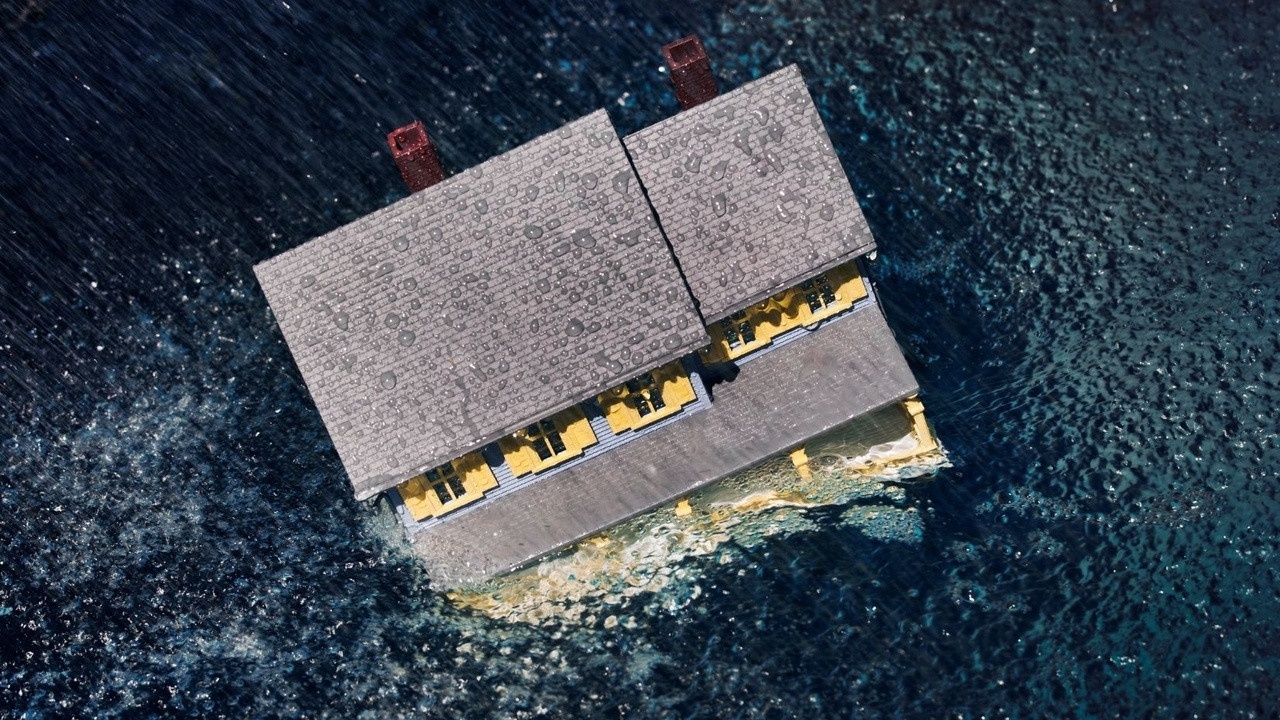Sustainable wellbeing and green living
Let's find ways to Flourish!
What does climate resilient housing look like?

Housing is a great place to start when discussing and remediating our environmental impacts, as residential buildings, in combination with commercial buildings, are responsible for 36% of global energy use and 39% of energy-related carbon dioxide emissions annually.
The good news is that thanks to the green building movement, people are becoming more and more aware of the different ways in which we can minimize our environmental impact through design. For example, we can employ green building techniques such as rammed earth construction, passive housing, and passive solar.
However, designing for reduced environmental impact isn’t the only thing we should be considering when it comes to housing. On a global scale, humanity is experiencing the consequences of our environmental actions – climate change. We are seeing unusual and unpredictable temperatures, changing weather patterns, and more severe storms and natural disasters, as there is more energy in the atmosphere along with change...
Finding our way with humane technology

I’m sure for many of us it is difficult to imagine our lives without technology. More specifically, technological devices that connect us to the internet such as cell phones, laptops, gaming systems, computers, and tablets can often seem like lifelines. If you’ve ever caught yourself thinking “wow, what would I do without the internet?” you’re not alone.
It really does come in handy when you need to find a substitute ingredient when cooking or baking, get directions, want to learn more about a subject or topic you are interested in, and so much more. This very blog post wouldn’t be accessible without technology! So, there is no denying that technology is useful and can improve the quality of one’s life.

However, in many ways the internet is quite unregulated and can end up being harmful. Unfortunately, consumer technology is created in a way that doesn’t actually have the consumer's best interests at heart. This is what the Centre for Humane Technology wants to fix.
The Centre for...
Bartering for the environment

When we think of bartering, it is easy to think of it as an ancient practice replaced by modern currencies. Mesopotamian tribes are thought to have started the first bartering systems in around 6000 BCE to trade food, weapons, and spices. In ancient Rome, services were bartered for salt. Bartering is thousands of years old and precedes the use of money; however, it is still relevant and used today with many online sites available for anyone who has something to trade. But where does bartering fit in a modern society? And what makes it beneficial?
What is bartering?
Bartering is a direct exchange of goods and services, without a money intermediary. It is a great way to participate in a sustainable and circular economy, and encourages the use of second-hand clothing, jewelry, and other items by creating a trading community, as opposed to being centred around a currency. Although it often does, bartering doesn’t have to involve goods. Services such as trade work, cooking and cleaning, a...
How to become a master composter

Composting is one of the most effective ways to keep household waste out of the landfill and create nutritious soil for your garden. Whether it be food scraps such as peels and stems or yard waste like grass clippings and fallen leaves, almost all organic material waste from your home can end up in your compost.
When organic material decomposes in landfills, methane gas is released due to lack of oxygen present during decomposition. Methane is a greenhouse gas that contributes to climate change, so limiting the amount released is important. In a compost pile or a vermicompost bin, plenty of oxygen is introduced and materials can break down without the production of methane. If none of this is news to you, or if you are excited to learn more, becoming a Master Composter might be for you!

What is a Master Composter program?
Master Composter programs are programs that are set up to help you have all the tools that you need to be extremely successful in your composting projects and,...
How to make your coffee even better

I confess that while I drink my herbal tea all day long, my morning treat is one really good cup of coffee. We all have those treats, and if coffee is one of your go-to choices perhaps it’s an iced cappuccino on a hot day or a morning dose of caffeine, it is worth considering if we can make coffee better.
With nearly 2 billion cups consumed every day across the globe, coffee is one of the world’s most popular drinks, and, according to Fairtrade, with 125 million people whose livelihoods depend upon it, coffee is also the most valuable and widely traded agricultural product. As with any industry this size, coffee production has significant environmental and social impacts, and it is important to remember that our beloved caffeinated beverage affects more than our sleep schedules. Your daily cup of coffee presents an opportunity to choose sustainability and start off your day with a positive impact on the world around you.
Navigating the world of sustainable coffee can present its own ...
Raising Eco Minimalists with Laura Durenberger


Can we create a new social contract with Indigenous Peoples?

According to the United Nations, there are over 476 million Indigenous Peoples living in 90 countries around the world. A large portion of the world’s cultural diversity can be attributed to Indigenous Peoples, as they represent a wide variety of cultures, traditions, languages, knowledge systems, and worldviews.
Many Indigenous cultures also have strong ties to their lands, resulting in sustainable and knowledgeable stewardship practices that have the potential to fight climate change and biodiversity loss. For example, the Indigenous Peoples of Australia have been using fire to manage forests for thousands of years.

However, Indigenous Peoples have historically, and continue to face issues such as poverty, discrimination, cultural genocide, marginalization, and other human rights violations. Take the indigenous Peoples of Canada, for example.
The Indigenous Peoples of Canada have been subjected to cultural genocide for over a century. Through the establishment of policies and la...
Possibilities in abandoned rail lines

Innovation and creativity are two very important elements when it comes to the creation of healthy, sustainable, and overall enjoyable cities. When presented with challenges, we need to be able to see opportunities and create positive change in order to make the most of the spaces we occupy.
As technology improves and cities evolve, many cities are left with unoccupied buildings, vacant plots of land, as well as aging and abandoned infrastructure. For example, many railway lines become abandoned over time, leaving unused tracks running through cities and taking up space. In the United States, and elsewhere around the globe, tens of thousands of kilometers of railroad were abandoned between the years 1965 and 2005.

Railway lines are abandoned for a number of reasons. One of the most common reasons is due to lack of use and poor profits due to competing methods of transportation. Whereas trains used to be the dominant method of transportation in Canada and the United States, contribu...
Better seafood choices are within reach

It is no secret that the food we consume helps to determine our environmental impact. On some level, we know this is the case. However, it can be easy to overlook and misunderstand the exact environmental impacts of our food. This is because we are so removed from the production, processing, and transportation processes that bring our food from farm or sea to our dinner tables.
The truth is, that many of us are quite unaware of the impacts our food has on the environment throughout multiple stages in what can be a complex food supply chain. This lack of knowledge may lead us to make incorrect judgments about the sustainability of our food choices.
For example, many people choose to eat fish and other seafood as an environmentally friendly alternative to meat such as chicken, beef, and pork.
Is seafood sustainable?
It is true that seafood has a smaller carbon footprint than other meat. This is because wild-caught fish feed in the wild, and don’t require land or fresh water, and are ...
The push for greener grocery stores

Pursuing a green lifestyle isn’t always easy – it’s true that eco-friendly goods and services aren’t always available, accessible or affordable, never mind convenient. As much as we may try to minimize our impact on the planet, sometimes the systems in place make that difficult.
While we are seeing many businesses going green and making commitments to reduce their environmental impact, there are still some businesses (especially essential services) that seem to be stuck in their environmentally harmful ways.
Take grocery stores, for example. Grocery stores are vital components of the built environment that make neighbourhoods and communities liveable. While it is possible to purchase some of your food from alternative sources such as farmer’s markets, community gardens, community supported agriculture, and your own backyard, chances are that you’ll still need to visit the grocery store every now and again.

So, given the fact that shopping at grocery stores is somewhat unavoidable ...

